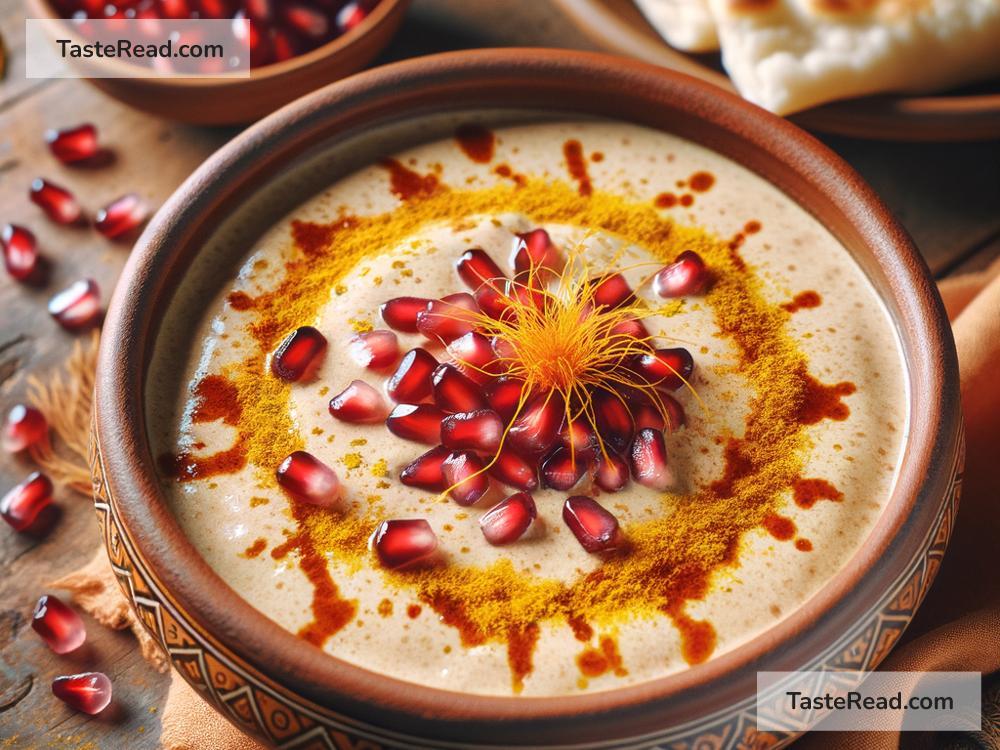Exploring Persian Cuisine: My Love for Pomegranate and Saffron
Tucked away in the ancient recipes and bustling kitchens of Persia, now known as Iran, lies a world of flavors that have whispered tales of tradition, culture, and family for centuries. Among the many treasures Persian cuisine offers, two ingredients stand out, capturing the hearts (and stomachs) of many, including mine: pomegranate and saffron. Their vibrant colors, unique flavors, and rich history make Persian cuisine not just food, but an experience. Today, I’ll share with you why these two ingredients have a special place in my heart and how they could captivate yours too.
The Ruby of Persian Cuisine: Pomegranate
Pomegranate, or “anar” as it’s known in Farsi, is more than just a fruit in Persian culture; it’s a symbol of life and beauty. Bursting with ruby-red arils, each bite is a perfect balance of sweet and tart, a flavor that’s as intense as its color. My introduction to pomegranates was through Fesenjan, a rich and comforting chicken stew. The pomegranate paste mixed with ground walnuts creates a sauce that’s both luxurious and heartwarming. It was love at first taste for me. The way pomegranate combines with other ingredients to bring out unparalleled flavors shows its versatility and indispensability in Persian cooking.
But it doesn’t stop at savory dishes. Pomegranates sprinkle their magic in salads, drinks, and desserts, making them a staple in Persian gastronomy. Each dish adorned with pomegranate feels like a celebration, embodying the joy and hospitality Persian culture is known for.
Saffron: The Golden Spice of Persia
While pomegranate brings the energy and vibrance, saffron adds elegance and sophistication to Persian cuisine. Known as the most expensive spice in the world, saffron is worth its weight in gold, literally and figuratively. This precious spice, derived from the saffron crocus flower, brings a rich golden color and a heavenly aroma that’s unlike anything else. Adding just a few strands of saffron to a dish transforms it into a luxurious feast for the senses.
My affair with saffron started with Tahchin, a beautiful, golden rice cake layered with chicken, yogurt, and eggs, and seasoned generously with saffron. The aroma that filled the kitchen as it cooked was intoxicating. With the first bite, the subtle floral and earthy notes of saffron danced on my palate, leaving me utterly enamored. Saffron, however, isn’t just about flavor. It’s a testament to the artistry and patience of Persian cooks, who know precisely how to harness its power to create dishes that are not just meals, but masterpieces.
A Culinary Love Affair That Transcends Borders
My passion for pomegranate and saffron goes beyond their taste. It’s about the stories they tell and the history they carry. Persian cuisine, with these ingredients at its heart, is a bridge between the past and the present, between cultures and generations. Every dish tells a story of family gatherings, celebrations, and ancient rituals, inviting those who partake to be a part of its rich tapestry.
But perhaps the most beautiful aspect of my love affair with these ingredients is how it has connected me with people across the globe. Food has a unique power to bring people together, and Persian cuisine, with its emphasis on sharing and hospitality, epitomizes this. Through my journey exploring Persian flavors, I’ve met individuals from all walks of life, each with their own tales of how pomegranate and saffron have touched their lives. Whether it’s a shared love for a particular dish or fond memories of cooking with loved ones, these connections are a reminder of the universal language of food.
An Invitation to Explore
If you’ve never tried Persian cuisine, consider this an invitation to explore a world of flavors where pomegranate and saffron reign supreme. Start with something simple, like adding pomegranate arils to your salad or a pinch of saffron to your rice, and let your taste buds be your guide. Persian cooking is an adventure, a celebration of life, and a homage to the rich history and culture of Persia. But more than that, it’s a reminder of the joys of cooking and eating, of experimenting with new ingredients, and of the bonds that food can forge.
So, here’s to pomegranate and saffron, to Persian cuisine, and to the endless journey of culinary discovery. May your kitchen be filled with the joy, flavors, and aromas of Persia, and may you find as much love in these dishes as I have.


